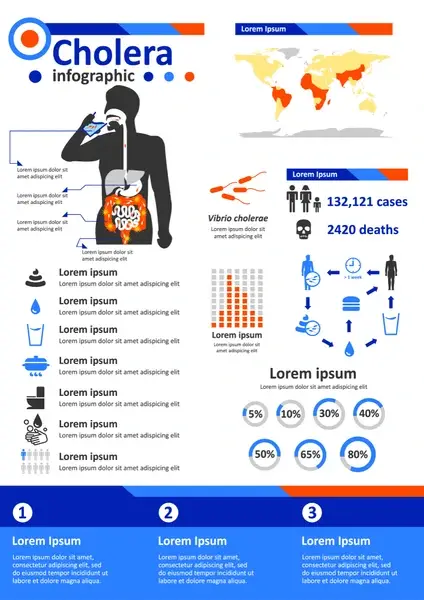YOUR HEALTH BLOG
THE CHOLERA

THE CHOLERA
Cholera: a threat worsened by natural disasters
Introduction
Following the earthquake in Haiti and the cyclone in Mayotte, both islands experienced cholera outbreaks. These events show how natural disasters can worsen health risks by damaging access to clean water and sanitation. Cholera, a serious infectious disease spread through contaminated water, can spread quickly under such conditions. Yet basic precautions like storing clean water, maintaining hygiene, and managing waste can help prevent such outbreaks. This article aims to help you understand cholera and how to protect yourself.
🦠 What is cholera?
Cholera is an acute intestinal infection caused by the bacterium Vibrio cholerae. It causes severe diarrhea, leading to rapid dehydration and even death if not treated promptly.
🌊 How is it transmitted?
It spreads through contaminated water or food, especially in unsanitary environments. Natural disasters often worsen this risk due to damage to water and sewage systems.
⚠️ Symptoms
-
Sudden, watery diarrhea
-
Vomiting
-
Muscle cramps
-
Weakness and fatigue
-
Dehydration (dry mouth, sunken eyes, lethargy)
💧 Prevention
-
Drink only safe or boiled water
-
Wash hands frequently
-
Cook food thoroughly
-
Avoid raw vegetables washed with unsafe water
-
Disinfect contaminated areas
💉 Treatment
Treatment relies mainly on rapid rehydration (oral or intravenous) and sometimes antibiotics for severe cases. Fast action is essential.
📍**[Illustration 5 – Cholera treatment center photo]**
📣 Summary
Cholera is preventable with basic hygiene and water safety, especially in the wake of disasters. Prevention is key.

